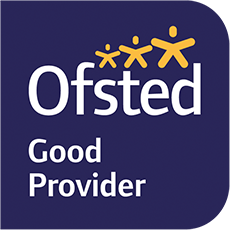Phonics
.png)
At Barkisland CE VA Primary School, we follow the Monster Phonics scheme. Monster Phonics is a whole-class Systematic Synthetic Phonics Scheme with Decodable Books for children in Nursery, Reception and Key Stage 1. Monsters and other characters support the learning of Early Reading and Wriitng.
Monster Phonics teaches children to read by enabling them to identify the individual graphemes (letter combinations) and blend the sounds (phonemes) together to read the word. It is a fun way to teach phonics, since it is multi-sensory. Sounds are categorised into ten colour groups, and each colour has a corresponding monster character. Monster Phonics is a highly advanced multisensory scheme. This creates interest and engagement from the children.
Please click here to find out more about the scheme and meet the monster characters!
Phonics is recommended as the first strategy that children should be taught in helping them learn to read. Phonics runs alongside other teaching methods to help children develop vital reading skills and give them a real love of reading.
Phoneme? Grapheme? Sounds confusing!
Words are made up from small units of sound (phonemes) and phonics teaches children to listen carefully and identify the phonemes that make up each word. This helps them learn to read and spell words words.
In phonics lessons children are taught three main things:
GPCs (grapheme phoneme correspondences)
GPCs simply means that children are taught all the phonemes in the English language and ways of writing them down. The first sounds to be taught are s, a, t, p.
Blending
Children are taught to blend sounds together by merging the individual sounds together until they can hear what the word is. This is a vital reading skill.
Segmenting
Segmenting is the opposite of blending! Children are able to say a word and then break it up into the phonemes that make it up. This is a vital spelling skill.
Why is phonics so tricky?
The English language is very complicated! England has been invaded so many times throughout its history and each set of invaders brought new words and new sounds with them. As a result, English only has around 44 phonemes but there are around 120 graphemes or ways of writing down those 44 phonemes. Plus, we only have 26 letters in the alphabet so some graphemes are made up from more than one letter. Phew! No wonder it is confusing!
ch th oo ay (these are digraphs – graphemes with two letters)
There are other graphemes that are trigraphs made up of 3 letters: igh, dge and a very few made from 4 letters e.g. ough.
Some graphemes can represent more than one phoneme i.e. ch can make different sounds – chip, school, chef
We hold a reading evening at the beginning of each academic year to support parents of children in Nursery, Reception, Year 1 and 2 in understanding how we teach children to read.





